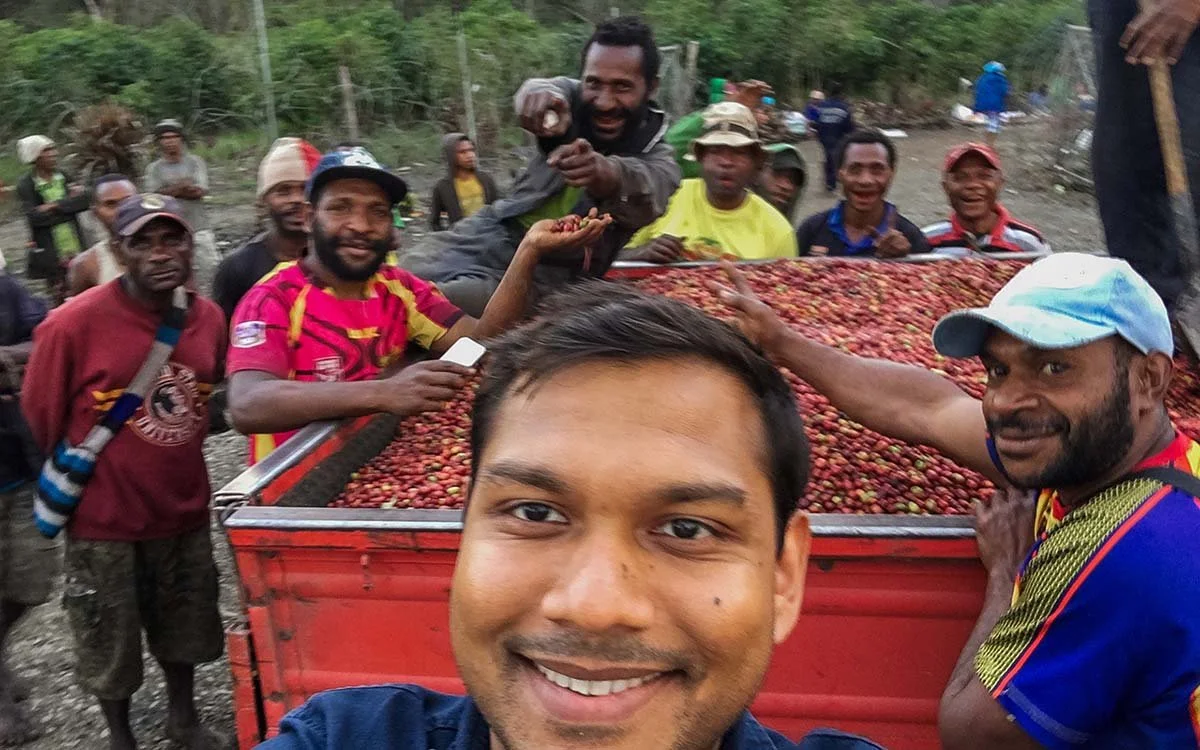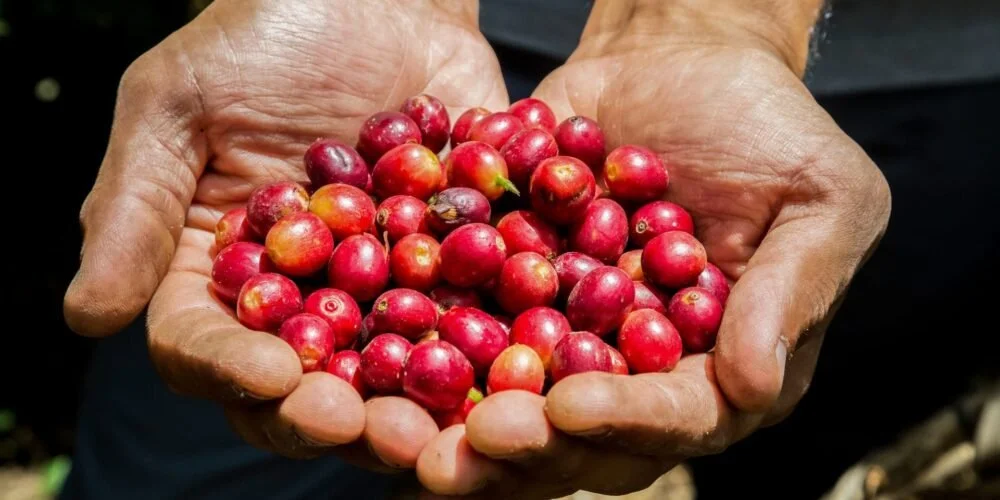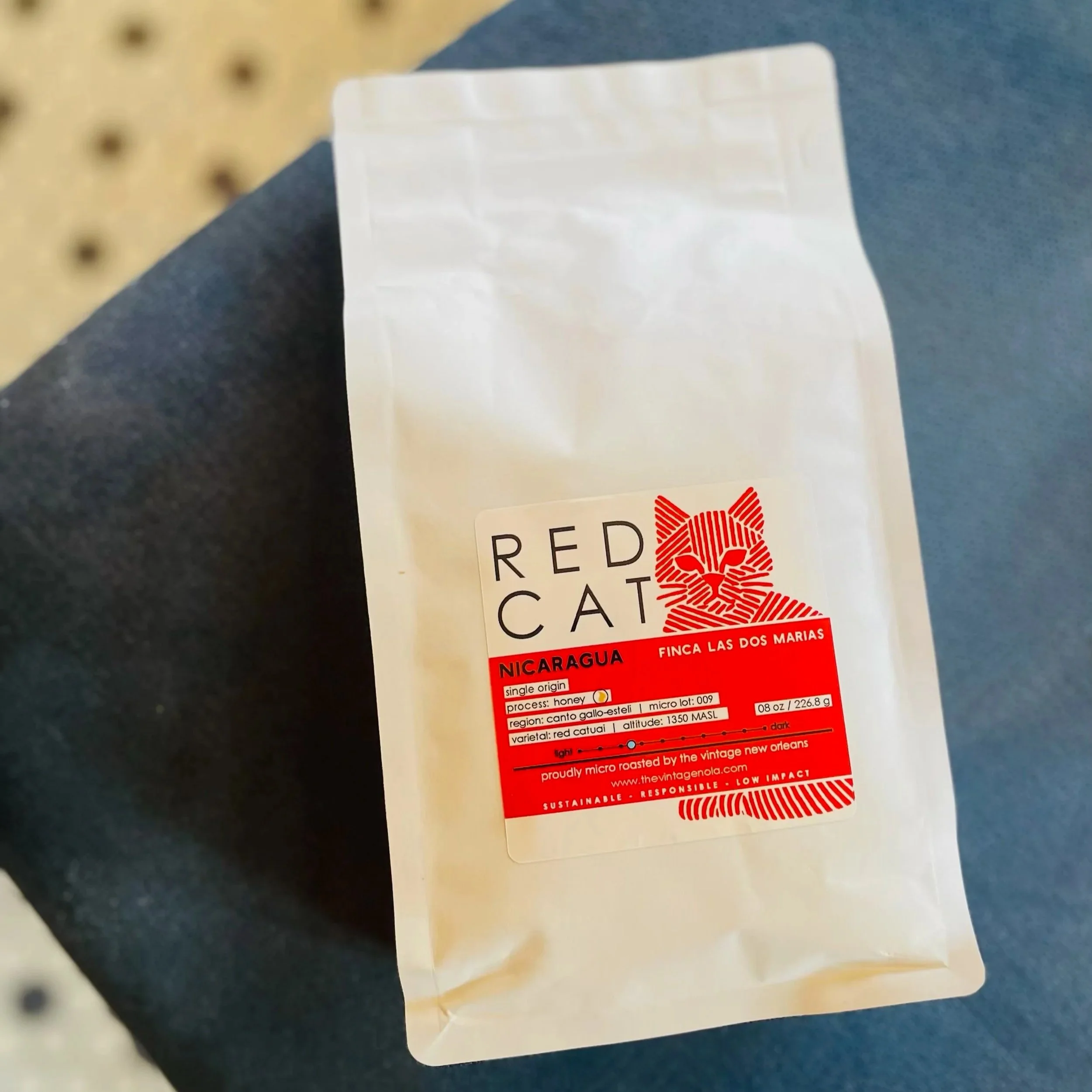The Vintage Single Origin: "Red Cat" Nicaragua



The Vintage Single Origin: "Red Cat" Nicaragua
The Red Catuai from Finca Las Dos Marías in the Canto Gallo, Estelí highlands showcases the sweet, round character for which Nicaragua is known. Grown around 1,350 masl, this micro lot (009) is processed by the honey (pulped-natural) method: cherries are depulped and dried with a thin layer of mucilage intact, concentrating sugars without sacrificing cleanliness. In the cup, expect a gentle citrus lift—think mandarin—over wildflower honey, golden raisin, and caramelized sugar, finishing with cocoa and almond. The combination of Red Catuai’s compact sweetness and the careful honey process yields a creamy body, low bitterness, and a balanced profile that shines as both filter and espresso.
Sensory: Rounded citrus, ripe stone fruit, with golden raisin, baked apple, and a hint of cocoa/almond
Cultivar: Red Catuai
Process: Honey
Elevation: 1350 MASL
Sensory: Citrus, tropical fruit, berries, floral; bright acidity, tea-like body.
Cultivar: Heirloom JARC Varieties
Processing: Washed
Altitude: 1,900–2,200 masl
Ethiopia is regarded by many as the birthplace of coffee. It has been cultivated there since the 1500s, in much the same way it is grown today. Most coffee grows wild in the shade of other trees and is referred to as forest grown coffee. Other coffees grow in gardens along with other crops, with minimal agricultural intervention. Some is a bit of a combination, where producers lightly cultivate and weed their forest crop in order to ease harvesting. In any case, most smallholders produce an average of only 5 bags per year.
Ethiopia Yirgacheffe comes to us from the Agaro dry milling station. The coffee is a collection of the efforts of 498 smallholder farmers. Their coffees are handpicked at peak ripeness, machine pulped and undergo anaerobic fermentation before washing. Finally, as is typical to the region, the coffee is sun-dried on raised beds for seven to ten days, depending on sun and humidity.
